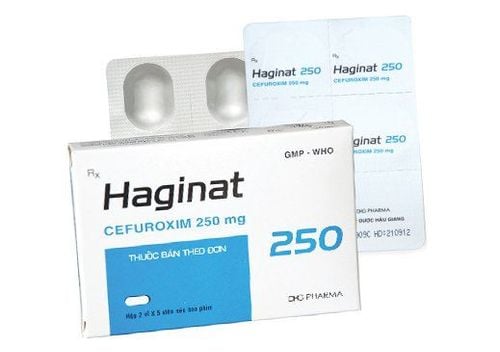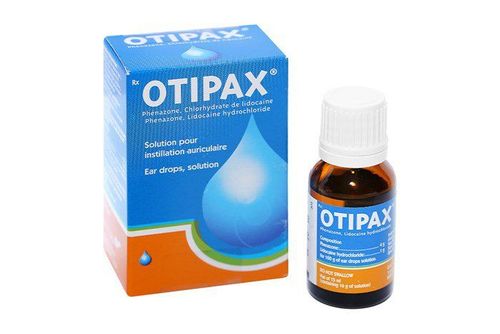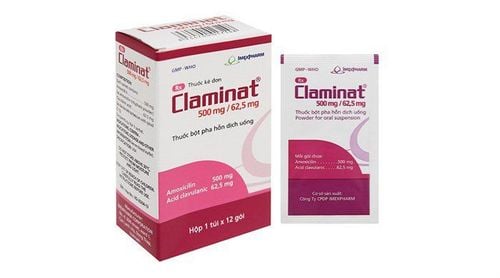This is an automatically translated article.
Egodinir has the main active ingredient is Cefdinr, a 3rd generation Cephalosporin antibiotic. The drug has antibacterial action thanks to its ability to inhibit bacterial cell wall synthesis by binding to one or more Penicillin-binding proteins. (PBP).
1. What is Egodinir?
Egodinir drug has the main active ingredient is Cefdinr, a 3rd generation Cephalosporin antibiotic. Its action is due to its ability to inhibit bacterial cell wall synthesis through binding to one or more Penicillin-binding proteins. (PBP), thereby inhibiting the final transpeptidation step in the bacterial cell wall Peptidoglycan synthesis. The bacteria will eventually be lysed by the continuous action of autolytic enzymes (autolysin and murein hydrolase).
Cefdinir's antibacterial spectrum is relatively broad, including staphylococcus aureus, streptococcus pyogenes, streptococcus pneumoniae, moraxella catarrhalis, haemophilus influenzae, E. coli, klebsiella and proteus mirabilis. It is more active against staphylococcus and streptococcus than Cefixime but less active against hemophilus and klebsiella. Cefdinir has no spectrum of activity against pseudomonas.
Egodinir drugs have many different strengths suitable for many subjects such as Egodinir 125 or Egodinir 300. Cefdinir is absorbed from the gastrointestinal tract, peak plasma concentrations are reached after about 2-4 hours and bioavailability is about 16-25%. The drug is widely distributed in body tissues and is approximately 60-70% bound to plasma proteins. Cefdinir is virtually unchanged and is excreted by the kidneys with a mean half-life of 1.7 hours.
2. Uses of Egodinir
Pharyngitis , tonsillitis ; Acute pneumonia, exacerbation of chronic bronchitis; Acute otitis media; Sinusitis ; Uncomplicated skin and skin structure infections. 3. What to do in case of overdose or missed dose of Egodinir? Symptoms of Cefdinir overdose include nausea, vomiting, epigastric pain, diarrhea, convulsions,... Treatment for overdose of cefdinir includes vomiting, gastric lavage if recently administered or hemodialysis to prevent overdosage. remove the drug from the body.
If you forget a dose of Egodinir, take it as soon as possible. However, if it is almost time for your next dose, skip the missed dose and take your next dose as scheduled.
4. What are the side effects of Egodinir? When using Egodinir, you may experience unwanted effects (ADRs).
Frequency > 10%:
Gastrointestinal: Diarrhea. Frequency 1 to 10%:
Dermatology: Skin rash; Endocrine and metabolic: Decreased bicarbonate, increased gamma-glutamyl transferase, increased lactate dehydrogenase; Gastrointestinal: Abdominal pain, vomiting; Urinary: Increased proteinuria, microscopic hematuria, vulvovaginal candidiasis; Hematology: Eosinophilia, leukocytosis, leukocytosis, lymphocytosis, thrombocytosis; Liver: Increased serum alkaline phosphatase; Nervous system: Headache. Frequency <1%:
Dermatology: Skin candidiasis, pruritus; Endocrine and metabolic: Decreased calcium, decreased phosphate, increased glucose, increased serum phosphate, increased serum potassium; Digestive: Anorexia, nausea, constipation, flatulence; Hematology: Decrease in hematocrit, decrease in hemoglobin, decrease in white blood cell count, increase in monocytes; Liver: Increased alanine aminotransferase, increased aspartate aminotransferase, increased serum bilirubin; Central nervous system: Dizziness, insomnia or somnolence; Musculoskeletal: Weakness.
5. Notes when using Egodinir 300
Egodinir is contraindicated in cases of allergy to Cephalosporin antibiotics; Use with caution in patients with a history of allergy to Penicilli and in patients with renal impairment; Side effects to watch out for when taking cefdinir are gastrointestinal upset including antibiotic-associated diarrhea (with or without Clostridioides difficile infection), nausea, and vomiting. Most patients with gastrointestinal disturbances due to Cefdinir are mild and self-limited. However, Clostridioides difficile infection may account for >20% of cases in children, adolescents, and adults. It is caused by antibiotics disrupting the balance of the intestinal microflora; Pregnancy: No increased risk of birth defects was found after first-trimester exposure to Cephalosporins. However, patients should only use it when absolutely necessary and under the direction of a specialist; Lactation: Patients taking a single dose of 600 mg/day did not find cefdinir in breast milk. However, patients should consult a specialist before taking Cefdinir while breastfeeding; Drug Interactions: Antacids: Concomitant administration of antacids with Cefdinir reduces the absorption of Cefdinir. Cefdinir should be taken at least 2 hours before or after antacids; Probenecid: Inhibits renal excretion of cefdinir. Probenecid may increase serum cefdinir concentrations and prolong the half-life by reducing renal clearance. Iron preparations: Concomitant use will reduce the absorption of Cefdinir. In summary, Egodinir 300 is a broad-spectrum antibiotic, commonly indicated in respiratory infections, skin infections and even otitis media. Gastrointestinal disturbances due to imbalance in the intestinal flora are a common side effect of the drug. Patients can overcome this situation by supplementing with digestive enzymes, keeping in mind that they should be taken 2-3 hours away from antibiotics.
Please dial HOTLINE for more information or register for an appointment HERE. Download MyVinmec app to make appointments faster and to manage your bookings easily.













